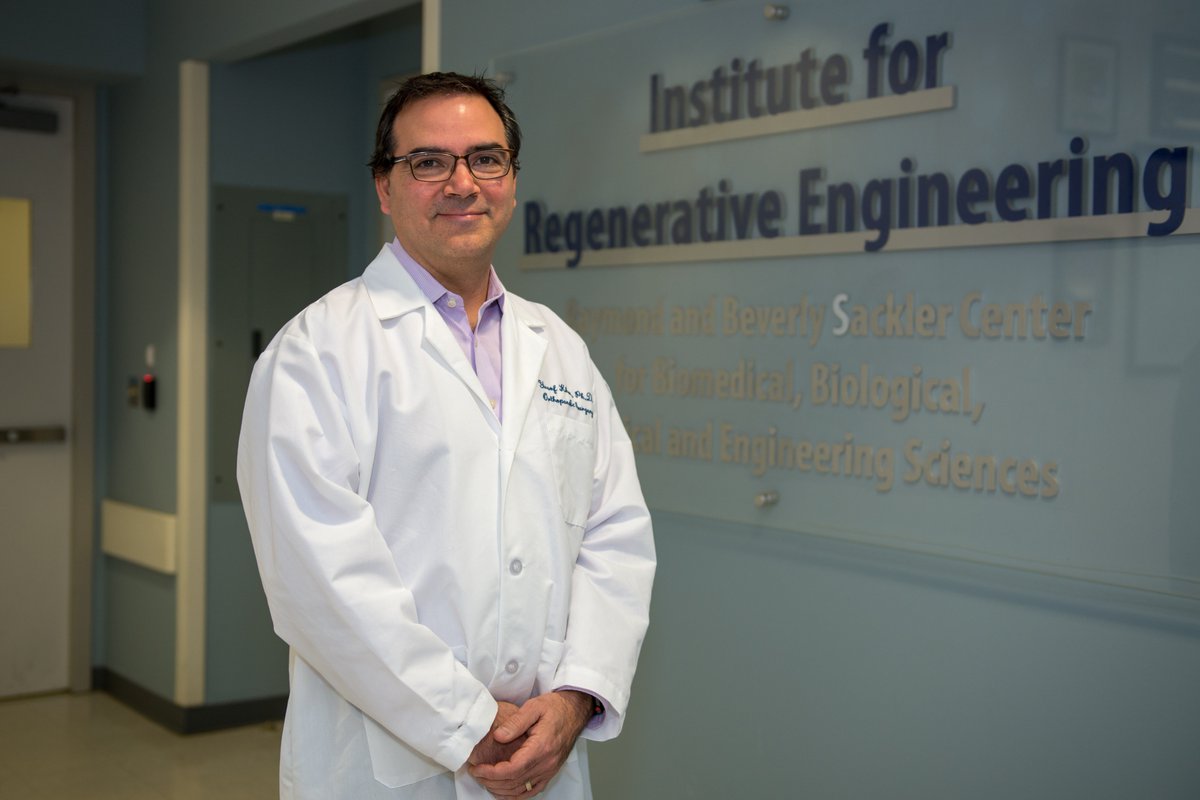Yusuf Khan, an associate professor of orthopedic surgery at UConn Health has received more than $1.7 million from the National Institutes of Health to study a novel combination of bone repair therapies.
New cell treatments for bone repair are becoming an increasingly popular alternative to more invasive procedures, especially for patients who only have small-scale defects.
One of these techniques involve hydrogels – networks of crosslinked polymer chains with very high water content – that can be used to transport and maintain cells within a bone defect. The high-water content of the hydrogel could allow the cell-hydrogel assembly to be injected into the bony defect using minimally invasive techniques.
While cell-loaded hydrogels have the potential to be hugely beneficial in bone repair therapy, once the gels are injected at the site, the encapsulated cells are typically left undisrupted within the hydrogel. Mechanical stabilization would be needed in order for the gel to effectively heal the defect as intended. However, introducing mechanical stabilization would actually nullify the well-described therapeutic benefits of physically loading bone-forming cells. This is particularly true at the earliest stages of healing.
To address this limitation, Khan and his team of co-investigators, professors Lakshmi Nair and Bryan Huey, are developing a method to mechanically stimulate the encapsulated cells after they are implanted into the defect. Their approach uses low-intensity pulsed ultrasound (LIPUS) that passes through the skin harmlessly to physically stimulate the encapsulated cells. LIPUS has been demonstrated to be an effective clinical tool for treating fresh fractures and fracture non-unions, but to date has not been used as a non-invasive mechanical stimulus for implanted cells.
Khan and his team have developed an ultrasound system that is capable of physically deflecting cells and hydrogels with no disruption to surrounding tissues. The researchers hypothesize that combining the hydrogel and ultrasounds technologies will prove to be more effective than using either one on its own.
“It has always been a goal of ours to exploit known clinical therapies in combination with some of the advances taking place in the materials science and biophysics realm,” says Khan. “This combination of ultrasound and cell-laden hydrogels brings two existing but disparate technologies together in novel ways toward our ultimate goal of adding to the arsenal of tools available to clinicians to heal complex musculoskeletal injuries.”
Khan received his Ph.D. in biomedical engineering from Drexel University. His current research focuses on regenerative engineering, bioactive polymeric surfaces, and integrating novel biomaterials with existing clinical therapies.
NIH Grant Number: 1R01AR073206-01



